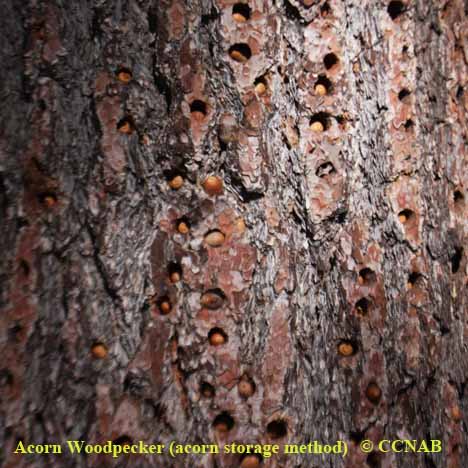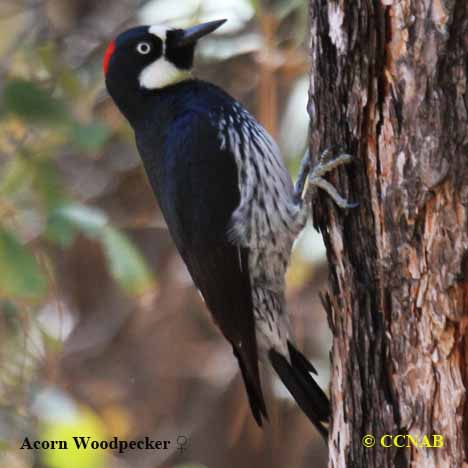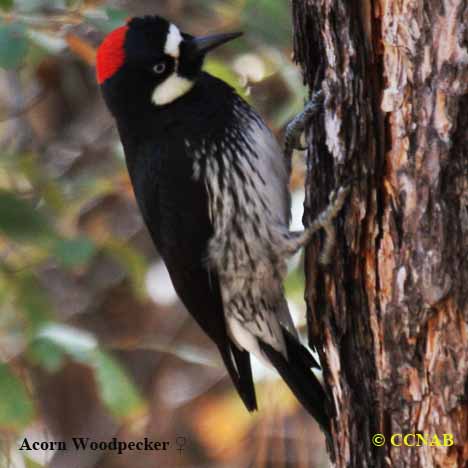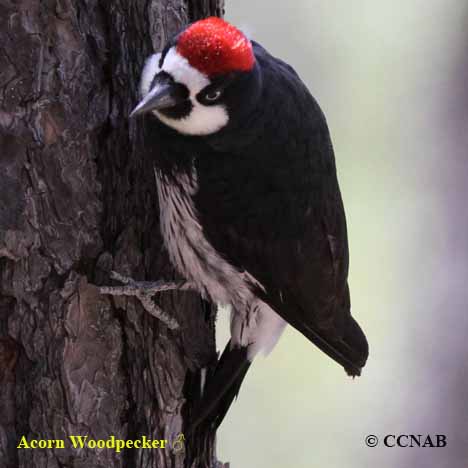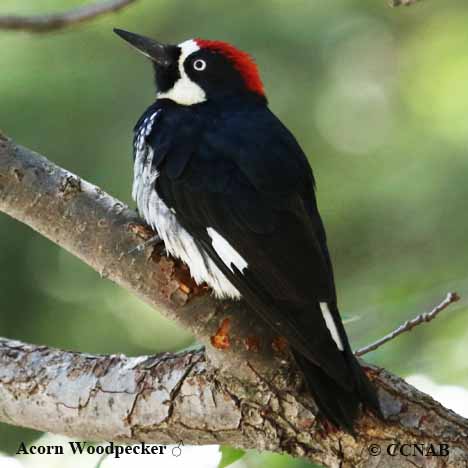North American Bird Search Box
This search box can be used to find bird species using bird's english, french or latin name, or to identify bird by its 4 letter Alpha Code
Field Guide for all the Birds of North America
Acorn Woodpecker
4 Letter (english names) Alpha Code: ACWO (1)
Pic glandivore
Melanerpes formicivorus
Information, images and range maps on over 1,000 birds of North America, including sub-species, vagrants, introduced birds and possibilities
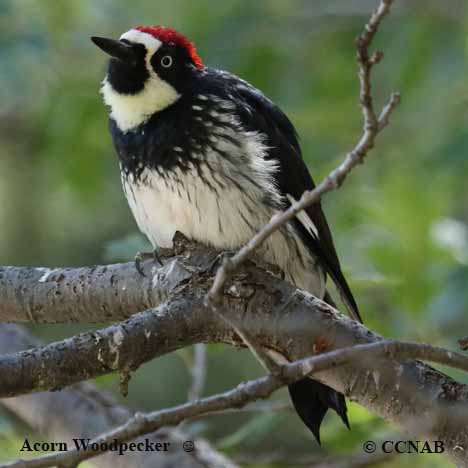
The Acorn Woodpecker (Melanerpes formicivorus) is seen in the southwestern areas of North America. These birds are found in colonies, where there are multiple males and females. Adults assist one another in the rearing of the young. When the acorns are ready, the woodpeckers peck thousands of acorn-sized holes into the bark of trees. They store the acorns, by placing each mature acorn in a separate hole, hence creating a food supply for the winter months. They endeavour to protect the acorns from other animals and birds, who also eat them.
Distinctions: The male and female have mostly a black and white body. The male with a solid red crown, is distinguished from the female, who only has a red cap with a black forehead. Large white wing patches become visible when the birds are seen flying. Both sexes have white eyes with dark pupils. The juveniles also have a complete red crown but a duller plumage and dark eyes.
Voice: Very loud and noisy, usually made by more than one bird. Like most woodpeckers, they communicate to one another by drumming on dry twigs or hollow limbs of trees.
Nesting: Four to five white eggs, one or maybe two broods per year. Nest is located in a cavity of a tree which both parents have pecked out.
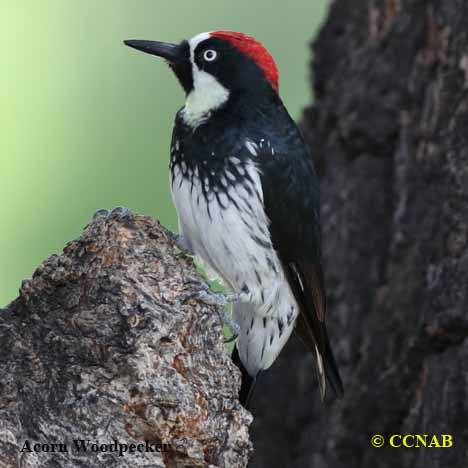
Life, Habitat & Pictures of the North American Woodpeckers
| B L | W W | W | Family | Latin Name |
|---|---|---|---|---|
| 9" 22.9cm | 17.5" 44.5cm | 2.8 oz 79.4g | Picidae | Melanerpes formicivorus |
North American Birds Videos
- Click here - Female
- Click here - Female
- Click here - Female
North American Birds Calls
- Click here
- Click here
- Summer
- Year Around
- Winter
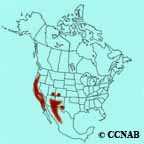
Found in mixed oak forests or oak/coniferous forests. They are seen mostly west of the Rocky Mountains, from the state of Washington, south to southern California and across the Sierra Mountains. They are also found in Arizona, through to New Mexico and into western Texas. There are also small populations of these woodpeckers in Nevada and Colorado.
Reference to Other Bird Site:
ABA - American Birding Association This site represents an organization that maintains official records of all birds species that have been proven to have been seen inside the perimeters of the North American Continent and the surrounding bodies of water. Regular revised versions are posted to keep the bird list current at all times. This is the list used by all serious birders over their lifetime. You may be aware of the movie called the "Big Year". It was with this list that all the competing birders used in an attempt to set a new record as to how many bird species that could be seen by an individual birder in one calendar year.
